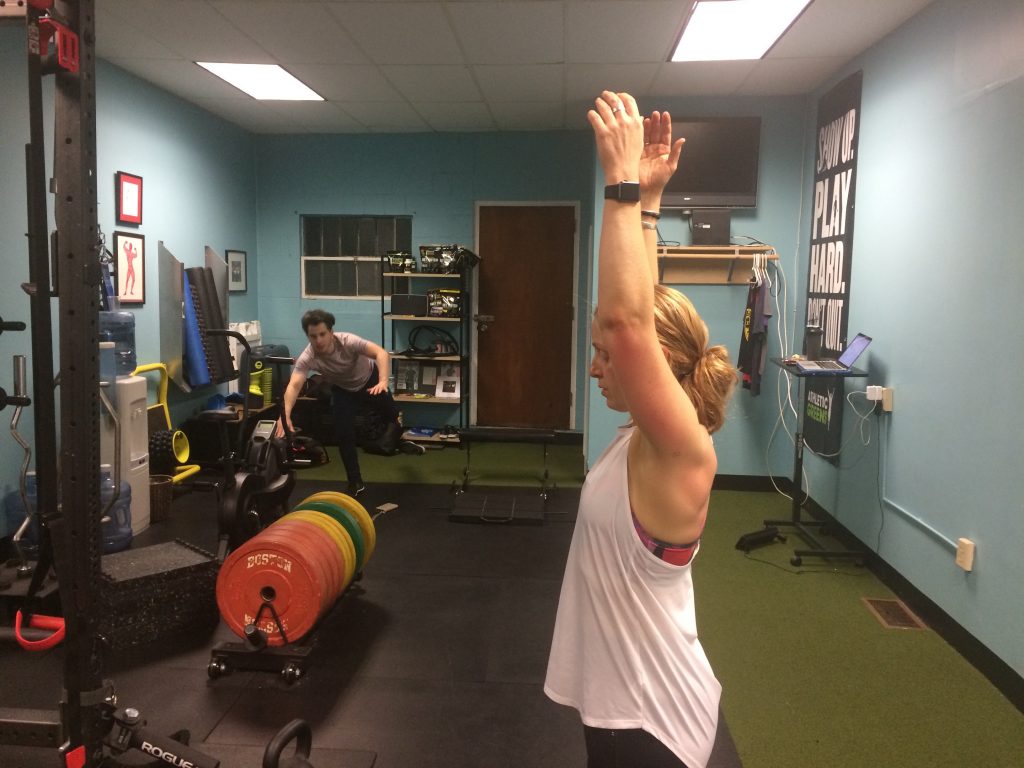Just to help calm the waters: I am not anti “corrective exercise.”
And I am not really going to throw my face into a brick wall.
I respect and can appreciate that, sometimes, our jobs as fitness professionals require us to pump the brakes and to venture down the corrective exercise rabbit hole.
Some people require a bit more TLC with regards to improved movement, motor control, and/or, and I’m paraphrasing here…”just learning to turn shit on.”
Some people will require a laundry list of additional mobility work, stretching, or positional breathing drills to point them in the right direction and to help them feel better.
What I am against, though, and what drives me bonkers, is when coaches and personal trainers go out of their way to:
1) Overstep their scope of practice and end up performing really shitty physical therapy with their clients and athletes.1
OR
2) Highlight every minor “dysfunction” with a client/athlete – excessive anterior pelvic tilt, kyphotic posture, left eye is lower than the right (you freak) – making him or her feel as if they’re walking ball of fail.

Training Is Corrective
Here’s another gleaming example of how TRAINING is corrective and how, if we do our jobs as coaches, we can often accomplish a lot sans the brick wall.
My client, Emily, who’s a trainer herself, has been dealing with some left shoulder issues. I had her come in the other night to see if I could offer some insights and to listen to some sick EDM beats.
The latter has nothing to do with anything, but whatever….give THIS a listen.
Emily showed up and I took the picture below. It shows something clearly awry and that some sort of shoulder clusterfuckey was at play; namely lack of shoulder flexion on the left side.
What was the culprit?

It could have been a few things:
- Capsular issue
- Lack of scapular rotation (namely upward rotation).
- Soft tissue restriction.
- Lack of lumbo-pelvic control.
- It was a Wednesday.
- I don’t know.
What I do know is that I had to respect my lane and understand it wasn’t my job as a strength & conditioning coach to diagnose anything.
I could, however, assess her general movement capacity, use my knowledge of anatomy, and perform a little trial and error to see if I could improve things.
What follows is more or less a brain dump and an attempt to explain my thought process as I worked with Emily for the next hour.
I’m not gonna say that what ended up happening was on par with some Matrix level shit, but I will say I basically know Kung-Fu.
I Know Kung-Fu
To start I thought to myself:
“What actions have to happen at the scapulae in order to get the arms overhead?”
– Upward rotation
– Protraction
– Posterior tilt
Emily wasn’t getting much upward rotation on that left side. When I asked her to bring her arms overhead it was as if her left arm hit a massive speed bump and came to an abrupt stop. She could push through it, but not without pain.
So I had to think about what muscles help with that action (upward rotation)?
– Upper and lower traps
– Serratus
Too, I noticed she also had a more depressed shoulder girdle as a whole; her clavicular angle was more horizontal rather than having a slight upward grade.
HERE‘s Eric Cressey discussing this in a little more detail.
I surmised her UPPER traps needed some attention.
The upper traps often get a bad rap and are avoided like a Coldplay concert. In certain populations (think: desk workers) and instances, the upper traps are OVERactive and can play a role in increased shoulder elevation as well as superior migration of the humeral head, and hence an increased risk for shoulder impingement.
In this scenario, it behooves us to not go out of our way to increase upper trap activation.
However, we often forget the upper traps are a major player in UPWARD ROTATION, not to mention help with scapular elevation…both of which, in my eyes, Emily could have used some more of.I didn’t get over corrective with Emily and start having her perform some voodoo like tapping her pinky finger three times while flossing her teeth with a strain of hair from a Hippogriff.
I didn’t have her perform a laundry list of “correctives” that, for all intents and purposes, would have likely made her feel like a patient and bore her to tears.
Nope, I had her TRAIN and just modified a few things.
We did:
1. Landmine Presses with a Shrug/Reach
2. Face Pulls in an upwardly rotated position (so the upper traps were more engaged)
3. And, instead of performing movements that would pull her into more shoulder depression and downward rotation (deadlifts, farmer carries, etc) we opted for Landmine Squats, Zercher RDLs, and Hip Thrusts.
In short: We turned shit on (upper traps) and trained movements that (likely) wouldn’t feed into the root causes of her symptoms.
Here’s the picture I took at the end of her session:

I’m Gandalf.


